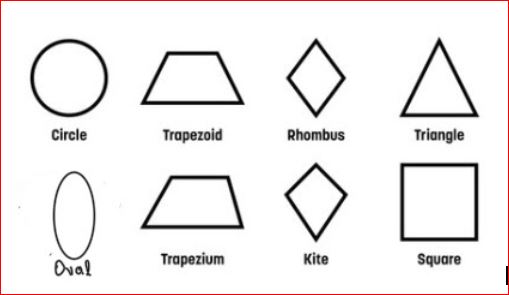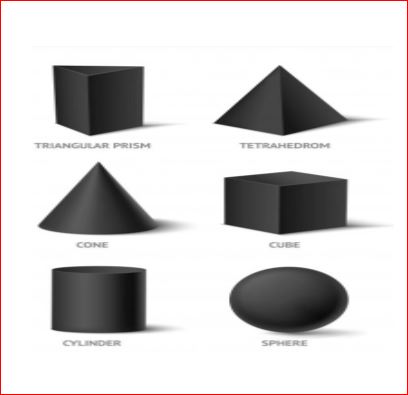All the objects that we see around us have a geometric structure and a shape. If you see objects around you carefully, you would notice that they are made up of lines, vertices, edges, curves, angles, and surfaces. The combination of these components, such as lines, vertices, edges, curves, angles give rise to a shape for an object. For some figures, the boundaries can be open or closed.
Understanding geometric shapes - regular and irregular structures
Any object which you must have seen around you may have a proper regular structure or an irregular structure.
Regular structure:
By regular structure, we mean that it may be in the form of a circle, square, triangle, rectangle, and so on. You would also notice that they have boundaries that have been made by joining various lines, curves, and vertexes. Some common examples of the regular structure include doors, windows, matchbox, table surface, eraser, and many more.
Irregular structure:
By irregular structure, we mean that it may not have a usual structure such as a square, rectangle, triangle, circle, etc. It may combine half of a square shape with half of a rectangular shape and a triangular shape. A good example of it is a rock.
Geometric Shapes Types
When an object or a shape is not connected at both ends in geometry, it is called an open geometric shape. A closed geometric shape is one in which the ends of an object or shape are connected. Geometric shapes are divided into two categories:
Two-dimensional geometric forms: These are two-dimensional designs or structures that only have the x- and y-axes. They are two-dimensional flat constructions. Triangle, square, rectangle and other shapes are examples.
Three-dimensional geometric shapes: These are three-dimensional geometric shapes with an x-axis, y-axis, and z-axis. The object's height is represented by the z-axis. They are three-dimensional solid formations. For instance, cube, cuboid, and so on.
Understanding geometric shapes in two dimensions

To begin, let's review the five most fundamental geometric forms in the world of a two-dimensional drawing.
Triangular shape: A triangular form has three sides and is a closed geometric figure in two dimensions. Consider a pizza slice shaped like a triangular chip.
Square shape: A square is a two-dimensional geometric object with four sides that are all the same length. For instance, a chessboard and a carrom board both have rectangular forms.
Rectangular shape:
When the length of the opposing sides of a rectangle are the same, the form is called a rectangle (plural rectangle). Examples include a surface of a TV or monitor screen or table surface.
Circular shape:
A circle is a two-dimensional geometric object with a circular form that is closed at both ends. There are no lines or corners in a circle. Think of something like a pizza bottom or a wheel.
Oval shape: An oval resembles a circle, but it is longer and wider. There are no straight or sharp edges on an oval. An oval-shaped figure looks more like an egg or the number zero (0).
Geometric Forms in Three Dimensions

Discover the six most fundamental 3-dimensional geometric forms by learning about them.
Cube: A cube is a three-dimensional geometric form composed of six equal-sided squares. Typical examples of a cube include a ludo dice, a square box, or a Rubik's cube.
Cuboid: When you join six rectangular surfaces, with surfaces of the same size on the opposite sides, a three-dimensional cuboid is formed. Typical examples of a cuboid include a compass box, a box in which a monitor or a TV is kept, and a jewelry box.
Cylinder: A cylinder is a solid three-dimensional geometric form with two identical circular flat ends on opposite ends.
Sphere: A sphere is a solid three-dimensional geometric form that resembles a ball in appearance. A cricket ball, tennis ball, football, basketball, and other sports’ balls are good examples of a sphere.
Geometrically speaking, a hemisphere is half of a sphere. Soup bowls, as an illustration.
Apex: The apex of a cone is a sharp, circular edge at the top of the cone's base. For instance, an ice-cream cone, a clown hat, etc. may be used as an illustration.

